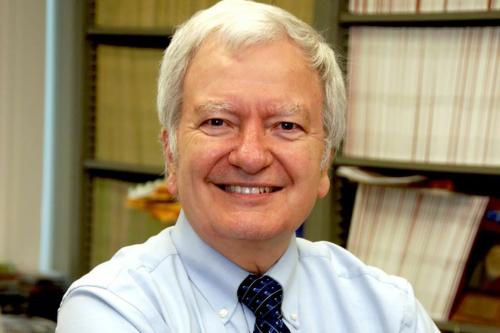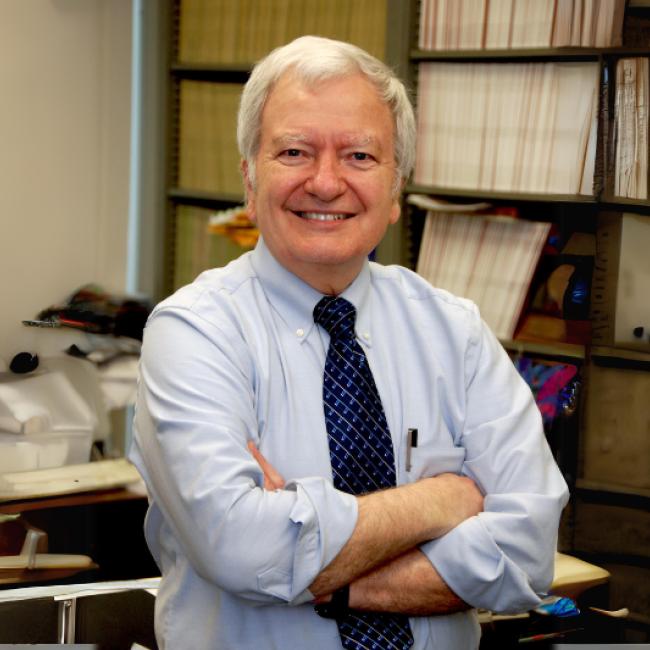
A midlife career shift for Michael Jung led to breakthroughs in fight against prostate cancer
For more than a decade, patients facing certain types of prostate cancer have been able to turn to Xtandi, the now-brand name of enzalutamide, a compound breakthrough developed in the lab of Michael Jung, a distinguished professor of chemistry at UCLA. A few years after the FDA approved the first compound, a second — apalutamide, commercially known as Erleada — was also approved. To date, hundreds of thousands of patients have been prescribed the drugs, the development of which will be chronicled in Jung’s Faculty Research Lecture, “Drug Discovery in Academia: Some Success Stories,” taking place at 2 p.m. this Friday in Schoenberg Hall.
“I let people in the med school and biology know that if chemistry could help them move a drug forward, they should come and talk to me. We’ll figure something out,” the Walter and Shirley Wang Professor of Medicinal Drug Discovery said, recounting to the UCLA newsroom how the stage was first set for what would turn into major cancer-fighting discoveries.
“So, one of the smartest biologists I’ve ever met, Charles Sawyers (then of UCLA Jonsson Cancer Center, who is now at Memorial Sloan Kettering), came into my office and said, ‘Let’s stop prostate cancer.’ I said, ‘Great idea. How the hell are we going to do that?’ And then we figured out what was the mechanism for resistance; then we figured out how to get around that. And that’s what the story is,” he said, setting up what attendees will hear as Jung steps behind the lectern.
Jung’s Faculty Research Lecture will be a unique opportunity to hear from the world-renowned scientist, whose expertise in and advancement of synthetic organic and medicinal chemistry saw him honored in April with the National Academy of Sciences Award for Chemistry in Service to Society. The professor, who has taught at UCLA since 1974, will also be recognized in August with the 2025 Edward E. Smissman Award from the American Chemical Society. RSVP here to attend.
The name of your lecture is “Drug Discovery in Academia: Some Success Stories.” Why “some”?
Well, first of all, it’s hard to get even one drug out of academics because it’s really weighted toward Big Pharma. So, we got one drug out on the market, and then we got a second drug on the market, both for late-stage prostate cancer.
And so that’s “some” success stories rather than one success story. And we have four more drugs in clinical trials, so we don’t know whether any more will be coming out.
How have you been planning the lecture and the flow of it? This is an audience where people come in who aren’t in your field.
It’s a talk I’ve given before to a mixed audience, but mostly to chemists. So, I’ve added one slide to explain a couple of terms that get used often, and I will go more slowly through the details.
How is your lecture structured? You’ll give your introduction, and then are you going to go into how you developed the compounds that turned into prostate cancer drugs?
Yes. So I give a talk that is as much biology as it is chemistry, and I try to make that biology understandable. And I start off by saying, ‘I’m going to tell you a story, and it’s a good story, even though it’s a true story.’ And then I tell the story of how I got interested in doing medicinal chemistry and drug discovery. At the age of 55, I changed fields, and it was a good idea because two drugs came out of it. And then I go into why did we choose this and how did we do it? It’s not just, ‘Here are the data.’ It’s a story.
What has been the reaction since you developed these compounds? You must get emails or letters.
I know several people who have been on the drug, and I know several family members of people who have been on the drug. So, usually, when I give a talk like this at an international meeting, people will come up to me and thank me for keeping their grandpa alive an extra two years. It’s very touching. I’m not an M.D., so I don’t get into the clinic, but Charles Sawyers is an M.D., and he goes into the clinic, and there, the people throw their arms around him and hug him because someone has lasted longer than they thought. One of my former students here thanked me because his grandpa lived an extra two or three years.
It’s only a male disease, and it generally affects older men, so some of my colleagues here and elsewhere have gotten the disease, and they’re on my drug.
What does it mean to you to be chosen to deliver the lecture?
It’s great because this is a recognition of the faculty and my colleagues, including colleagues who are not in science. This is all over the board, and not that many chemists have given the Faculty Research Lecture — only two in the last 20 years or so. It’s an incredible honor that you’re being recognized for great research by your peers, and by the people who run UCLA.
You are currently working on Alzheimer’s and even baldness. What keeps you so inspired to do all of this research?
It’s exciting; it’s fun. We made two compounds that have helped a million men or more with prostate cancer. That gives you a good feeling when you go to sleep at night. So, doing this research, the whole idea is you’re doing it not for yourself and not for the glory. You’re doing it to help patients. That’s a very high standard, but it feels good.
